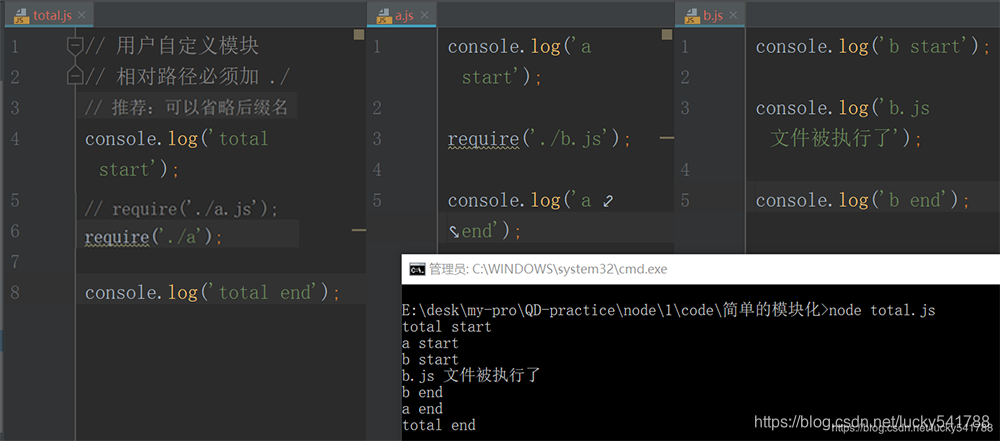版权声明:未经同意,不得随意转载转载 https://blog.csdn.net/lucky541788/article/details/83822003
- 支持 EcmaScript
- 区别:没有 DOM、BOM
- 核心模块
- 第三方模块
- 用户自定义模块
核心模块
Node 为 JavaScript 提供了很多服务器级别的 API,这些 API 绝大多数都被包装到了一个具名的核心模块中了
例如:文件操作的 fs 核心模块,http 服务构建的 http 模块,path 路径操作模块,os 操作系统信息模块。。。
模块加载:var fs = require('fs');
// 用来获取机器信息的
var os = require('os');
// 用来获取当前机器的 cpu 信息
console.log(os.cpus());// 一堆 cpu 信息
// 用来获取当前机器的 memory 内存
console.log(os.totalmem());// 8512643072
// 用来操作路径的
var path = require('path');
// extension name 扩展名
console.log(path.extname('E:/desk/my-pro/QD-practice/node/1/code/myname.txt'));// .txt
用户自定义模块
注意:require 相对路径必须加 ./
推荐:可以省略后缀名

在 Node 中,没有全局作用域,只有模块作用域
- 外部访问不到内部
- 内部也访问不到外部

模块之间传值
require 方法有两个作用
- 加载文件模块并执行里面的代码
- 拿到被加载文件模块导出的接口对象
- 在每个文件模块中都提供了一个对象:exports ,exports 默认是一个空对象,把所有需要被外部访问的成员挂载到这个 exports 对象中
将 2.js 文件内容传给 1.js
1.js
var res = require('./2');
console.log(res.foo);// hello
console.log(res.add(20, 10));// 30
2.js
var foo = 'hello';
// console.log(exports);// {}
exports.foo = foo;
exports.add = function (x, y) {
return x + y;
};